"Curiosity", the most sophisticated and heaviest robot ever sent to explore the Red Planet, celebrates five years today since its landing. So what did we learn from him about the possibility of life on Mars, and what awaits him in the future?
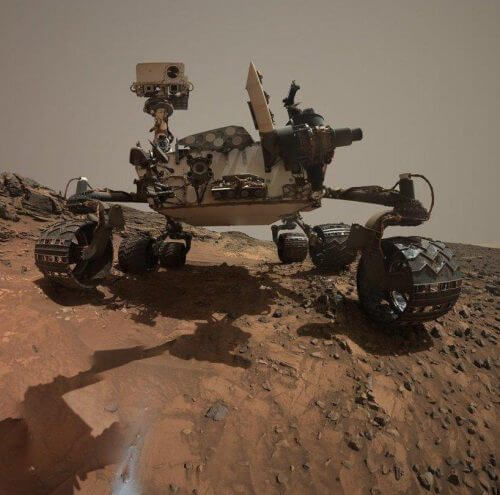
On August 6, 2012, exactly five years ago, if you were standing on Mars in the right place, you would have witnessed a wonderful sight - a vehicle, hovering above the ground using rocket engines, pulling down another vehicle that is connected to it by a cable. When the lowered vehicle reached the ground, the cable was disconnected and the hovercraft launched itself to crash at a safe distance. Just 15 minutes later, cheers of joy were heard at NASA's control center in Pasadena, California, due to the long distance the radio signals traveled from Mars to Earth. The complicated landing was nicknamed "7 minutes of terror” (the time from atmospheric entry to landing), but in the end it was a complete success, enabling the start of NASA's most ambitious mission to Mars.
Curiosity, the nickname given to the lander that landed, is the most sophisticated and heaviest ever sent to the Red Planet. Although this is a very limited club of vehicles (considering that NASA is the only space agency that has successfully landed and operated any vehicle on Mars, unless you count the 20 seconds that the Soviet lander operated March 3 in 1971), but with a weight of 900 kg and the size of a car, the rover dwarfs its predecessors.
The rover is equipped with a highly advanced system of scientific instruments, which turns it into a laboratory for everything. Among other things, a special furnace is installed in it, in which samples drilled from rocks are heated to a temperature of about 1000 degrees Celsius, where gases are emitted from the samples, from which it is possible to learn about the chemical composition of the rocks. In addition, the rover has a laser that allows it to vaporize rocks and study their composition from afar.
Of course, all this does not come for free, and the cost of developing the rover is one of the highest of NASA's missions, amounting to approximately 2.5 billion dollars.
This sophisticated and expensive scientific instrument has one main purpose - to investigate the geological history of Mars, with the aim of determining whether the conditions suitable for life existed in the distant past. During the five years that have passed since the landing, researchers have become convinced that the answer to this question is positive, and that the arid and frozen Mars of today was very different from the hot and wet Mars of more than 3 billion years ago, as evidenced by the ancient period that Curiosity reveals in its geological journey. It is important to emphasize that Curiosity has not discovered life or the remains of life, nor does it have the ability to do so (if there was life on Mars, the researchers believe that it is most likely that it did not evolve beyond the basic level of bacterial life).
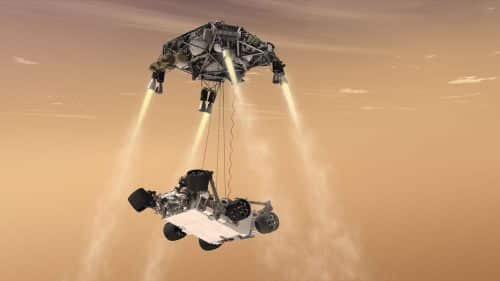
Curiosity's landing site was determined inside "Gail Crater", a huge crater with a diameter of 154 km, which was formed about 3.7 billion years ago. One of the main mysteries of the crater, and the feature that most attracted the researchers to choose the site, is Mount Sharp (Aeolis Mons in its official name) which rises to a height of 5.5 km in the center of the crater.
Shortly after the 2012 landing, which took place on a safe plane at the bottom of the crater, The rover discovered Rounded stones that resembled pebbles. They were probably formed in streams that flowed water into a large water lake that filled the crater, that took place, according to the researchers, in the period between 3.8 and 3.3 billion years.
More evidence of water was discovered in the first year of the mission, when Curiosity was roaming the crater floor and had not yet begun climbing the mountain. Among other things, she She discovered Clay minerals formed in a marine environment, perhaps as sediments on the bottom of the ancient lake.
Curiosity also discovered that this water was neither too salty nor too acidic, therefore suitable for the existence of life. Actually, the mission researchers Please specify that even humans could drink from this water.
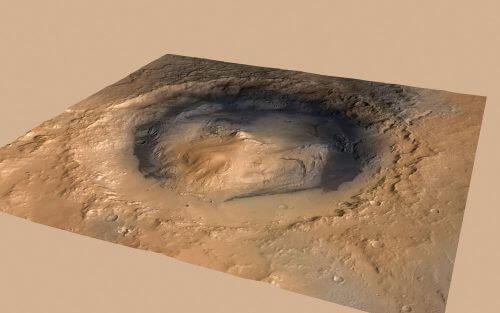
In 2014, the rover first began climbing the slopes of the mountain, which consists of different geological layers, each of which tells a different story about the geological history of the Red Planet. The researchers hope that as Curiosity climbs toward the mountaintop, it will reach younger geological layers, documenting the process that transformed Mars from the wet, hot world that perhaps resembled Earth, to an arid, frozen desert, with Very thin atmosphere, which makes up less than one percent of the Earth's atmosphere.
The first geological layer that Curiosity reached at the base of the mountain was called the "Murray Formation", andShe discovered Because most of it consists of sediments of mudstone, formed at the bottom of lakes. Since on Earth these sediments take millions of years to form, the researchers could conclude that the ancient lake in Gale Crater existed for millions and even hundreds of millions of years, another encouraging fact for the possibility that if life can develop outside of Earth, then they had the appropriate environment to do so in that ancient period.
Another important discovery provided by Curiosity recently concerns the central mystery of the presence of Mount Sharp in the center of the crater. Many craters in the solar system have a peak in their center, which is formed when the ground that was spread around during the collision event, "bounces" back to the center. However, the mountain seen in Gale Crater is very different in its characteristics, and was probably formed a long time after the collision that created the crater.
From the information gathered by Curiosity the researchers succeeded decipher The mystery - after the crater was created, it was filled with water brought to it from the ground and streams, and became a lake, which filled its bottom with sediment over the years. When the Martian climate began to change and the lake dried up, the crater filled with sand and dust. Since then, over billions of years, the weak but constant wind of Mars has carved the mountain we see at its center today.
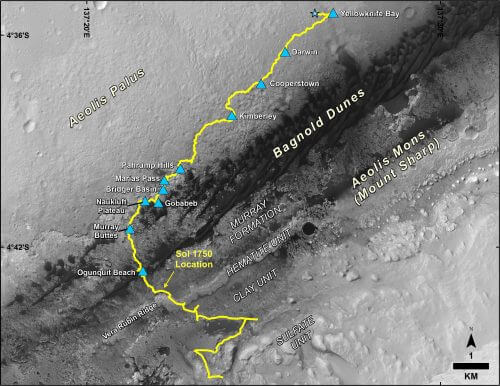
In addition, the researchers Found Even after the lake dried up, water continued to exist underground, and when the sediments formed at the bottom of the lake dried up and cracked, the water seeped through them and created "veins" of minerals within the rocks in the ground, which Curiosity documented in his geological journey. The fact that groundwater continued to exist even after the lake dried up extends the amount of time that an environment suitable for life existed, even if it was below the surface of the earth.
one question What Curiosity has not yet been able to decipher is how the climate on Mars was warm enough to allow water to exist in a liquid state. This is because in the ancient period in question, the brightness of the sun was about 30% weaker than its brightness today. This mystery, called "The mystery of the dim young sun", is also true for Earth, but becomes more problematic on the more distant Mars. In fact, not only did Curiosity not solve the mystery, it only complicated it, because it found no evidence of the existence of a very thick atmosphere of carbon dioxide at the time, one of the explanations proposed to solve the mystery. As on Earth, carbon dioxide acts as a greenhouse gas, and in sufficient quantities, it would have been able to heat Mars to allow for liquid water.
Curiosity recently ended its stay in the Moray Formation, and is now making its way toward younger, higher geological strata at Mount Sharp. The geological researcher is now in front of a ridge as tall as an eight-story building, known as "Vera Rubin Ridge", named after the astrophysicist who helped discover dark matter, who passed away last year. The ridge is rich in the mineral called hematite, formed under the conditions of an aqueous environment. Due to the great height of the ridge, it will take Curiosity some time to cross it safely.
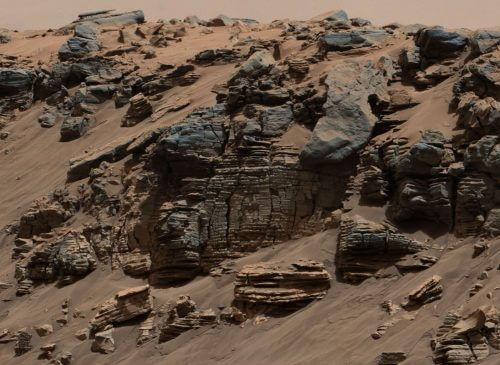
Above the ridge awaits Curiosity a layer rich in clay minerals, which also accumulated, apparently, as sediment at the bottom of the ancient lake. Above this unit is an even younger galic layer, rich in sulfate minerals, which mission researchers estimate formed when water was already rarer.
Mission researchers believe that it will take Curiosity at least three years to make its way to the sulfate layer, which is about 200 meters above the robotic explorer's current location. But will you survive until then? Probably so. Curiosity does not have an electrical power problem, as it generates its electricity independently, by utilizing the heat generated by the decay of radioactive material, which should suffice Her for at least 14 years, and possibly even beyond that.
The main problem facing the rover is its aluminum wheels, that showed signs of wear faster than expected. One of the main reasons for this was that the rover pushed its front wheels with force on sharp stones sticking out of the ground, puncturing the thin aluminum layer of the wheels. The researchers have since been able to reduce the rapid wear process, and they believe that the wheels will be able to survive climbing the mountain for years to come.
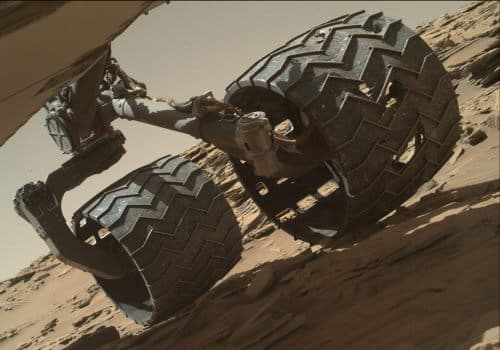
Another problem that recently appeared impairs Curiosity's scientific research capability. Since December 2016 she not able Drill samples in the rocks, which after the drilling should go to an in-depth study inside Curiosity's internal laboratory. The source of the problem is in the feed system of the drill, which is responsible for moving it forward and backward. The researchers failed to solve the problem directly, and are now considering an alternative solution, in which the robotic arm itself, at the end of which the drill is located, will be used as a replacement for the defective device.
Despite these problems, Curiosity continues to live well beyond its main mission, which was designed to last only two years, and it shows no signs of stopping anytime soon.
Curiosity is not the only vehicle currently exploring Mars - the smaller Opportunity has also been continuously exploring Mars since 2004. Unlike Curiosity, Opportunity runs on solar energy, and despite the many mechanical faults that have also been discovered in it, it has managed sip A distance of 45 km and continue to vigorously explore Mars. recently She began to explore an ancient channel in the Endeavor Crater where she is located, which may have been formed by flowing water billions of years ago.
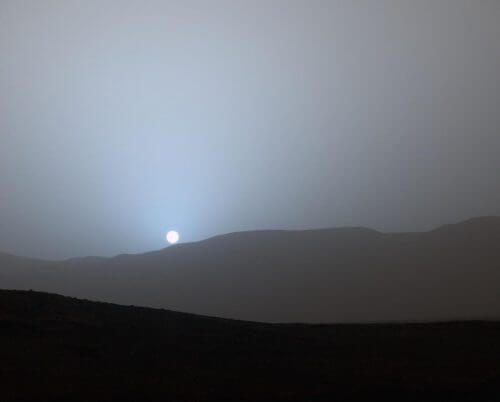
In 2020 NASA intends to launch Another rover to Mars, which will be identical in shape to that of Curiosity, but will be more advanced. Among other things, the vehicle will collect samples for the first time, that future follow-up missions will be able to transport them to Earth, where they can be studied in detail under laboratory conditions. An innovative device Another that will be attached to the vehicle will not be dedicated to the study of the planet, but to the study of the ability to utilize it for human needs. The experiment will try to turn carbon dioxide, which makes up the bulk of Mars' thin atmosphere, into oxygen, which has several uses, from breathing to oxygenating rocket fuel.
See more on the subject on the science website:
- The Curiosity rover adds to a mystery that has plagued Mars explorers for years
- The discovery that the crater on Mars where Curiosity landed was a lake increases the possibility of extraterrestrial life
- Curiosity marks a full Martian year since its landing
- New light on the possibility of life on Mars
- Curiosity landed safely on Mars

2 תגובות
If they discover life on Mars even if it was the simplest life.
Apart from the scientific knowledge about the development of life, this will be a serious knockout for creationism and Amnon Yitzhak and Shoat.
There is a chance that underground caves on Mars in a closed environment still have groundwater and maybe even some primitive life. It will be possible to search for them with the help of radars like those used to search for oil